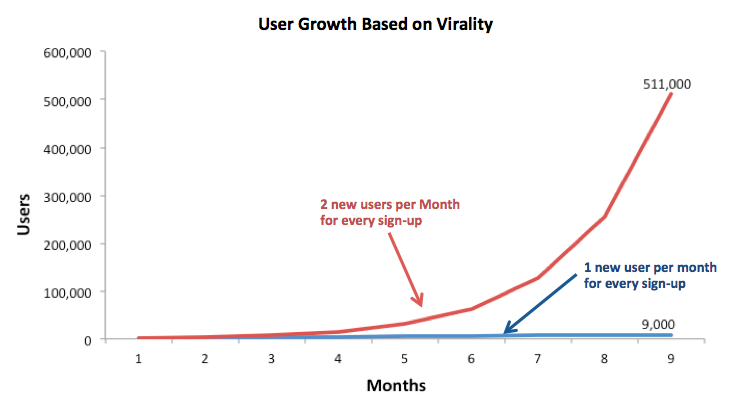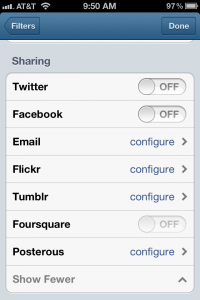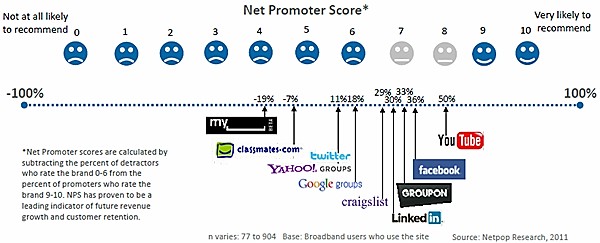 Vinicius Vacanti is co-founder and CEO of Yipit. Next posts on how to acquire users for free and how to raise a Series A. Don’t miss them by subscribing via email or via twitter.
Vinicius Vacanti is co-founder and CEO of Yipit. Next posts on how to acquire users for free and how to raise a Series A. Don’t miss them by subscribing via email or via twitter.
Back in November of 2006, before NY Mag and TimeOut put startups on the cover, before the “tech bubble”, before Twitter and Foursquare were popular, before working at a startup in NY was considered a reasonable thing to do, I was a private equity investor for a $1.6 billion fund called Quadrangle Group.
It was just my third year out of college and I made a little over $250,000. For a Brazilian immigrant who spent most of his childhood kind of worried he would have to do physical labor, I felt like I had really made it. My job was challenging (making investing decisions always is) and I worked with some really smart and motivated people.
But, beyond “making it”, I was comfortable. After a year of private equity investing, I felt like I was good enough to do it for the long haul. While I’m sure there would be a few unexpected twists and turns, I sort of knew what the next 20 years of my life were going to be like and it looked pretty good.
There was only one little issue. It turned out that I didn’t really love money.
After 18 years, my mom had successfully passed along an immigrant guilt towards buying anything lavish for myself. So, my expenses weren’t really growing in proportion to my income. And, at least for me, I didn’t see money as a metric of success the same way Warren Buffet does. When it’s all said and done, I didn’t want to be measured by how much money I had accumulated but by what I had built.
But, when you’re making more money than you know what to do with, you tend to procrastinate on any big decisions. Well, at least until you’re reminded of what else is possible.
How I Woke Up
My company, Quadrangle, organized a private conference every year for the media and telecom industry. This was not just another conference, it was ridiculous.
I realized how ridiculous it was when I got an email with the list of attendees. Every major media company executive was coming. Brian Roberts from Comcast, Steve Ballmer from Microsoft, Jeff Zucker from NBC and media celebrities like Katie Couric, Jerry Seinfeld and Harvey Weinstein. While journalists weren’t allowed to cover the conference, Andrew Ross Sorkin, of the NY Times, was given permissions to write-up a quick blurb about the conference.
I was really excited and had barely slept the night before. The dress code was business formal and I walked into the Pierre Hotel wearing my best suit and power red tie.
I soaked in the scene for a few seconds trying to find the first person I was going to talk to. And, then, it hit me. Why would they want to talk to me? They were the heads of major media companies, I was a 25 year-old finance guy. They didn’t want to talk to me, they wanted to avoid me. I wasn’t doing anything important, anything that could impact their companies. They didn’t care about my suit or my power red tie.
So, for the next 30 minutes, I just awkwardly walked around the room trying to listen in on the conversations people were having. When the panels started, I took a lonely seat in the back.
 After listening to a few panels comprised of 50+ year-old media executives, the audience was looking forward to the fresh perspective of the next panel on new media.
After listening to a few panels comprised of 50+ year-old media executives, the audience was looking forward to the fresh perspective of the next panel on new media.
The two guests were in their 20’s. I almost couldn’t believe that two people roughly my age had been invited to talk in front of all of these important people. And then, even more shocking, they had all of their undivided attention. All of the 50+ year-old media executives were mesmerized, excited and scared of what they had built and what it meant for them. One was Chad Hurley, fresh off his recent sale of YouTube to Google, and the other, wearing sandals, was a still unknown pre-“The Social Network” Mark Zuckerberg.
When the panel ended, media executives came up to them to talk about working together, get advice on their business. I just stood in the background watching.
I was floored.
They were building something. They were changing how the world communicated. And, they had done it in just a few years without raising significant capital to get started. They willed their services into existence.
What was I doing? Could I do what they had done? Could I build something as significant as they had?
Yeah, right.
I had never built a tech startup. I had never even built a website. What did I know about product management, web development, and user interfaces?
I had a high-paying finance job. I was on my way. It was too late. I had no idea what it meant to start a company and the most likely outcome was failure.
On an expected value basis, the obvious decision was to stick with finance.
I was where I should be.
But, as the days went by, I kept thinking back to the conference. A scary idea started creeping into my thoughts: what if I could build something? Wouldn’t I always wonder? Wouldn’t I regret it? Wouldn’t it eat away at me over the years?
And, that’s when I realized that I didn’t actually know if I was good enough because I hadn’t really failed in life (at least not professionally). Most people don’t really fail. We tend to take the job that we think we’ll succeed in. We are hesitant to reach. And, if we do reach and succeed, then we don’t reach again.
The only way to know how good you might be at something is to fail trying it.
And, that’s when I decided it was time to test my limits. It was time to really reach. It was time to quit my safe job and walk straight into almost certain startup failure.
I had no idea how to start a successful tech company, but I was going to try. I was going to step into that arena. And, whether or not I triumphed or got knocked down, I didn’t really care much. I wanted to know the bounds of my abilities.
So, What Happened?
It’s now 4 years since I left Quadrangle. Did I fail? Hell, yes. I got knocked down many, many times. For the first 2 years, I had no idea what I was doing and was just swinging blindly. But, every time I fell, I learned why.
After two and a half years of failure, we launched the third version of Yipit and it took off. We’ve now raised funding twice including the most recent $6 million round this summer. Yipit is growing, we have a strong vision of where we’re going and we’re building an amazing team (join us!).
But, perhaps, one of the sweetest moments was that I was invited to the latest Quadrangle conference. Not as a panel speaker, we’re nowhere near that. But, as part of a session where three startups pitch Barry Diller for 3 minutes and then he grills you with questions in front of the entire audience of media executives. It was clearly terrifying but it went well. At the end of the session, Barry picks the startup he thinks is most like to succeed and he picked Yipit.
When I stepped off the stage, still kind of shaking from the presentation, media executives came up to me talk about what we were working on and how we might be able to work together. I couldn’t believe they were coming to me (and I wasn’t even wearing my power red tie).

Vinicius Vacanti is co-founder and CEO of Yipit. Next posts on how to acquire users for free and how to raise a Series A. Don’t miss them by subscribing via email or via twitter.













 Vinicius Vacanti is co-founder and CEO of Yipit. Next posts on how to acquire users for free and how to raise a Series A. Don’t miss them by
Vinicius Vacanti is co-founder and CEO of Yipit. Next posts on how to acquire users for free and how to raise a Series A. Don’t miss them by  After listening to a few panels comprised of 50+ year-old media executives, the audience was looking forward to the fresh perspective of the next panel on new media.
After listening to a few panels comprised of 50+ year-old media executives, the audience was looking forward to the fresh perspective of the next panel on new media.







